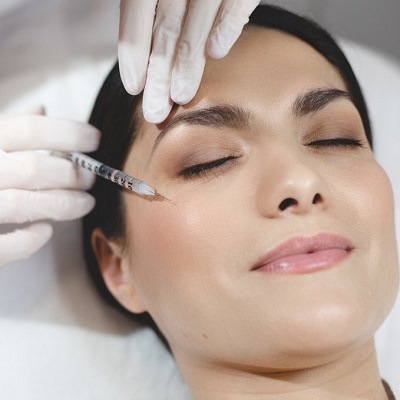The aging process is a natural part of life, and as we grow older, our skin inevitably begins to show signs of time's passage. Facial aging often manifests in the form of wrinkles, fine lines, sagging skin, and loss of volume, which can affect one's self-confidence and overall appearance. In the quest to combat these visible signs of aging, many individuals turn to cosmetic procedures to rejuvenate their appearance and regain a youthful look. One such innovative and non-surgical option gaining popularity is the liquid facelift. This article will delve into the concept, procedure, benefits, and considerations of the liquid facelift to help you better understand this transformative cosmetic treatment.
Defining the Liquid Facelift:
The liquid facelift, also known as the non-surgical facelift or injectable facelift, is a cosmetic procedure designed to rejuvenate the face without the need for invasive surgery. Unlike traditional facelifts that involve incisions and lifting of the underlying tissues, a liquid facelift employs a combination of dermal fillers and neuromodulators (like Botox) to address various signs of facial aging.
Procedure:
The liquid facelift typically begins with a comprehensive consultation with a qualified and experienced cosmetic specialist. During this consultation, the patient's facial structure, skin condition, and aesthetic goals are evaluated to create a customized treatment plan.
The treatment itself is usually performed in a clinical setting and requires minimal downtime. Local anesthesia or numbing cream may be applied to enhance patient comfort during the procedure. The practitioner strategically injects dermal fillers, such as hyaluronic acid-based products, into targeted areas to restore lost volume, smooth out wrinkles and fine lines, and lift sagging skin. Simultaneously, neuromodulators like Botox are used to relax specific facial muscles, reducing the appearance of dynamic wrinkles, such as crow's feet and frown lines.
Areas commonly addressed during a liquid facelift include the cheeks to restore youthful plumpness, the jawline to improve definition, the temples to alleviate sunken appearance, and the marionette lines around the mouth to lift sagging skin. The procedure's versatility allows for tailored treatments, making it a comprehensive solution for facial rejuvenation.
Benefits of the Liquid Facelift:
-
Non-Surgical Approach: The absence of surgical incisions and the use of injectables make the liquid facelift an attractive option for individuals seeking facial rejuvenation without the risks, scars, and longer recovery periods associated with surgery.
-
Immediate Results: Patients can often notice visible improvements immediately after the procedure, with optimal results becoming more apparent as any swelling subsides.
-
Minimal Downtime: Since it's a non-invasive procedure, most individuals can resume their daily activities shortly after the liquid facelift, although some temporary side effects like redness and swelling may occur.
-
Gradual Rejuvenation: The results of a liquid facelift can last anywhere from six months to two years, depending on the products used and the individual's metabolism. As the effects gradually wear off, patients have the option to maintain their results with follow-up treatments.
-
Customizable Treatment: Each liquid facelift can be tailored to suit the patient's specific needs and preferences, providing a personalized approach to facial rejuvenation.
Considerations and Risks:
While the liquid facelift is generally considered safe when performed by qualified professionals, there are some considerations and potential risks to be aware of before undergoing the procedure:
-
Temporary Side Effects: As with any injectable treatment, patients may experience some temporary side effects like bruising, swelling, redness, and tenderness at the injection sites. These typically subside within a few days.
-
Qualification of the Practitioner: It is crucial to seek a reputable and experienced cosmetic specialist to perform the liquid facelift, as proper technique and an understanding of facial anatomy are vital to achieving natural-looking results and minimizing potential complications.
-
Limitations: While a liquid facelift can address mild to moderate signs of aging, it may not be suitable for individuals with significant sagging skin or excess tissue, in which case a surgical facelift may be more appropriate.
-
Allergic Reactions: Although rare, allergic reactions to dermal fillers can occur. Patients should discuss any known allergies or medical conditions with their provider before the procedure.
Conclusion:
The liquid facelift offers an exciting non-surgical alternative for those seeking to reverse the signs of aging and rejuvenate their appearance. With its ability to restore volume, reduce wrinkles, and lift sagging skin, this customizable treatment has gained popularity as a minimally invasive option for facial rejuvenation. However, it's essential to undergo the procedure with a qualified and skilled practitioner and have realistic expectations about the results. By combining artistry with science, the liquid facelift can provide patients with a renewed sense of confidence and a refreshed, more youthful appearance without the need for surgery.


No comments yet